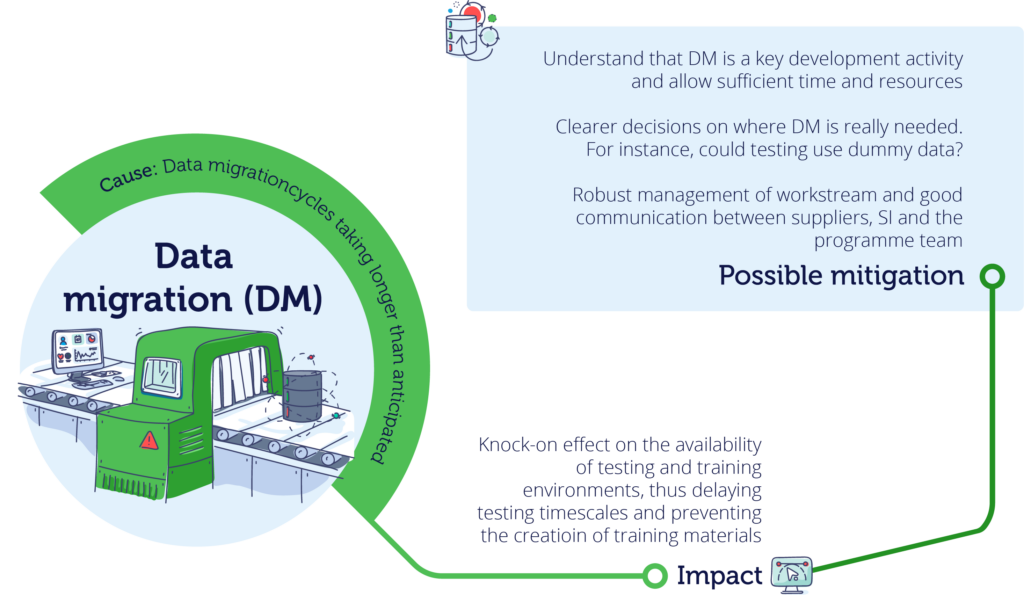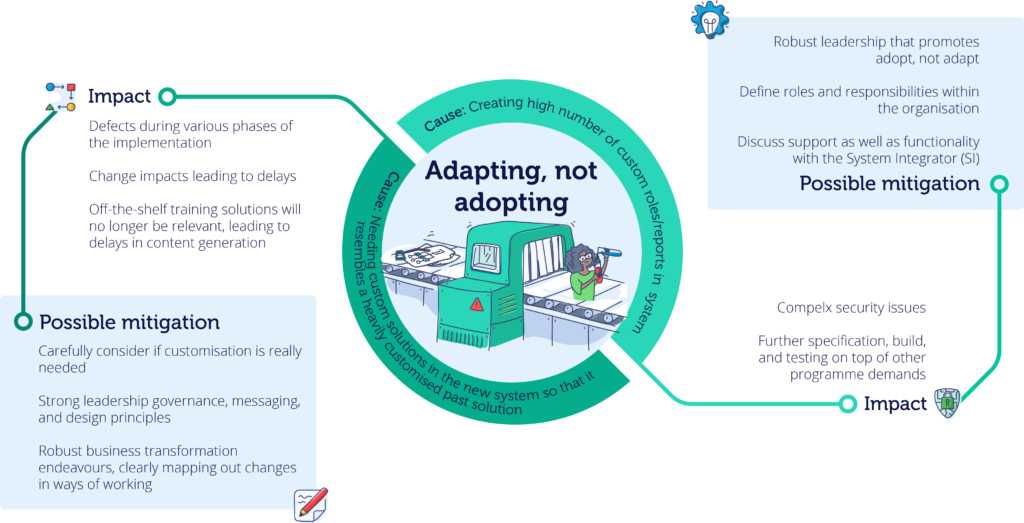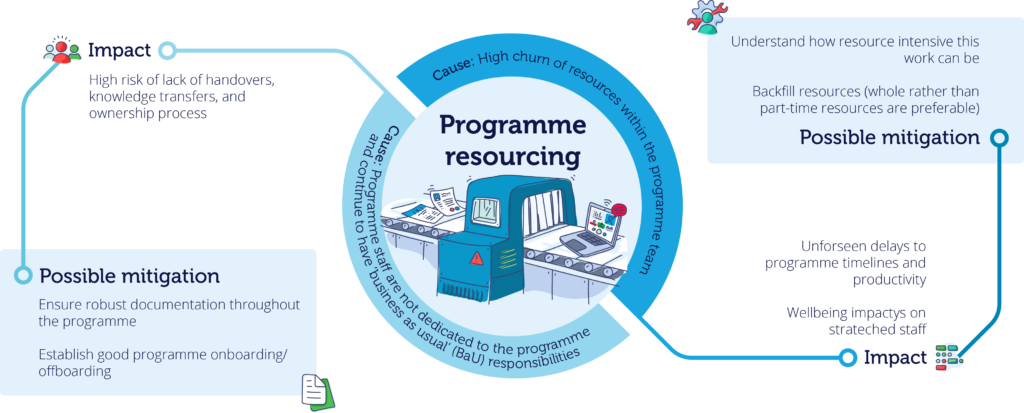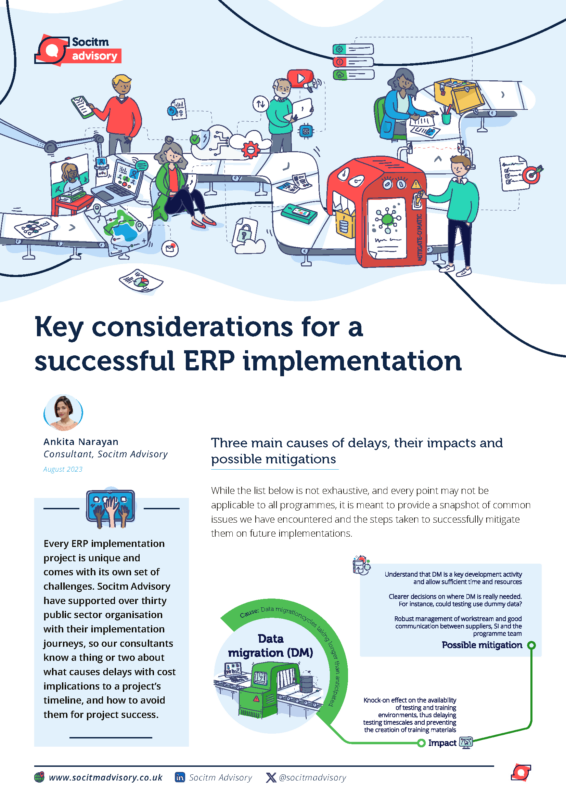The challenges
Every Enterprise Resource Planning (ERP) implementation project is unique and comes with its own set of challenges. Socitm Advisory have supported over thirty public sector organisations with their implementation journeys, so our consultants know a thing or two about what causes delays with cost implications to a project’s timeline, and how to avoid them for project success.
Three main causes of delays, their impacts, and possible mitigations
While the list below is not exhaustive, and every point may not be applicable to all programmes, it is meant to provide a snapshot of common issues we have encountered and the steps taken to successfully mitigate them on future implementations.



Key Recommendations
Having conducted extensive lessons learned activities after each of our many ERP implementations, we have compiled the following list of recommendations that might help avoid blockers to a successful implementation.
- Ensure programme vision and strategic objectives are identified at the outset and are aligned to the organisation’s strategic direction
- Ensure strong and robust governance is in place to deliver on the vision
- Ensure the programme is adequately resourced with sufficient in-house resource and supplemented where required with specialists
- Ensure clear roles and responsibilities are in place and programme resources understand their roles
- Ensure the programme processes are clearly understood and followed by all programme resources
- Ensure emerging risks are reviewed quickly and mitigation is agreed and actioned
- Ensure clear escalation routes are in place and communicate effectively
Summary table
| Issue | Cause | Impact | Possible mitigation |
| Programme Resourcing | High churn of resources within the programme team | High risk of lack of handovers, knowledge transfers, and ownership of processes | – Ensure robust documentation throughout the programme – Establish good programme onboarding / offboarding |
| Programme Resourcing | Programme staff are not dedicated to the programme and continue to have ‘business-as-usual’ (BAU) responsibilities | – Unforeseen delays to programme timelines and productivity – Wellbeing impacts on stretched staff | – Understand how resource intensive this work can be – Backfill resources (whole rather than part time resources are preferable) |
| Adapting, not adopting | Needing custom solutions in the new system so that it resembles a heavily customised past solution | – Defects during various phases of the implementation. – Change impacts leading to delays – Off-the-shelf training solutions will no longer be relevant, leading to delays in content generation | – Carefully consider if customisation is really needed – Strong leadership, governance, messaging, and design principles – Robust business transformation endeavours, clearly mapping out changes in ways of working |
| Adapting, not adopting | Creating a high number of custom roles and reports in the system | – Complex security issues – Further specification, build, and testing on top of other programme demands | – Robust leadership that promotes adopt, not adapt – Define roles and responsibilities within the organisation – Discuss support as well as functionality with the System Integrator (SI) |
| Data Migration (DM) | Data migration cycles taking longer than anticipated | Knock-on effect on the availability of testing and training environments, thus delaying testing timescales and preventing the creation of training materials | – Understand that DM is a key development activity and allow sufficient time and resources – Clearer decisions on where DM data is really needed. For instance, could testing use dummy data? – Robust management of workstream and good communication between suppliers, SI and the programme team. |
